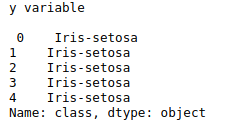To create box plot to detect the outliers in a data set variable.
Read the data set.
Scaling the feature variables.
Initialize the box plot object form plotly library.
Declare the plotting variables.
Pass it into the go.box(variable).
Use py.iplot(variable) to create the box plot.
Box plot used to detect the outliers attributes in a variable.
#import plotly library
import plotly.plotly as py
import plotly.graph_objs as go
#import pandas library
import pandas as pd
#read the data set
data=pd.read_excel(‘/home/soft23/soft23/
Sathish/Pythonfiles/flyer.xlsx’)
df=pd.DataFrame(data)
#declare the variable
y0 = df[‘FlyingReturnsMiles’]
#assign into box plot object
trace0 = go.Box(y=y0)
#store it in a variable
#because plotting object takes 1 argument only
data1 = [trace0]
#plotting the variable
py.iplot(data1)
Source code(Two variable):
#import plotly library
import plotly.plotly as py
import plotly.graph_objs as go
#import pandas library
import pandas as pd
#read the data set
data=pd.read_excel(‘/home/soft23/soft23/http://slogix.in/
Sathish/Pythonfiles/flyer.xlsx’)
df=pd.DataFrame(data)
#declare the variable
y0 = df[‘FFP#’]
y1 = df[‘EnrollDuration’]
#assign into box plot object
trace0 = go.Box(y=y0)
trace1 = go.Box(y=y1)
#store it in a variable
#because plotting object takes 1 argument only
data1 = [trace0,trace1]
py.iplot(data1)

